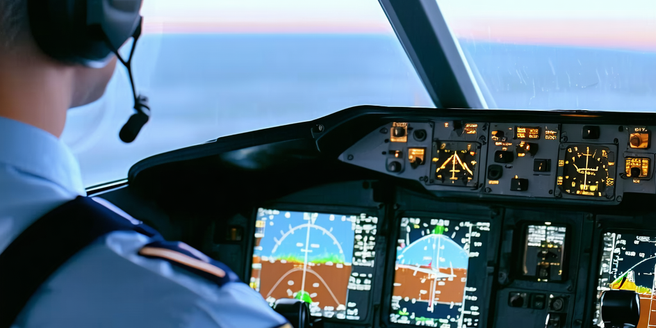
Understanding Crosswinds: An Aviation Challenge
Crosswinds are a formidable challenge in aviation, requiring considerable skill and precision. When wind blows across runways, it creates difficulties for pilots aiming to land safely. Such conditions rarely align with runway orientations, compelling aircraft to navigate complex aerodynamic dynamics. Understanding these winds is crucial, as they pose significant risks. Pilots must decipher weather forecasts and wind patterns to anticipate crosswind impacts accurately. By mastering crosswind assessment, pilots ensure better decision-making, enhancing safety during approach and landing. Learning about environmental factors is also vital for anticipating drastic changes that might affect stability. Thus, comprehensive knowledge about crosswinds becomes imperative in reducing risks. Ultimately, understanding these challenges involves continuous learning about weather phenomena, pilot perception, and the unpredictability of wind behavior—all crucial for securing safer landings amid crosswind conditions.
Physics of Crosswinds: How They Affect Aircraft
Crosswinds alter flight dynamics significantly, affecting aircraft stability and control. They act perpendicular to the plane’s forward motion, resulting in lateral forces that pilots must counteract to maintain a steady path. The severity of crosswind impact depends on aircraft size, speed, and the wind’s velocity. This necessitates precise calculation and adjustment of control inputs to compensate for drifting and maintain course alignment. Pilots often employ techniques like the ‘crab’ or ‘sideslip’ approach to mitigate crosswind effects. These techniques involve angling the aircraft into the wind to create balance, requiring an astute understanding of physics at play. Aerodynamic principles dictate that as wind pressure varies, so too must pilot responses. Mastery of these techniques helps in minimizing adverse consequences, ensuring safety and structural integrity during crosswind landings.
Pilot Techniques for Safe Crosswind Landings
Landing in crosswinds demands meticulous technique and unwavering focus. Pilots utilize strategies like the ‘crabbing’ method, where they align the aircraft with the runway just before touchdown while the nose faces into the wind. Alternatively, the ‘sideslip’ approach involves dipping the aircraft wing into the wind, preventing lateral drift. Both techniques require skillful coordination of rudder and ailerons to maintain control and alignment. Pilots rely on precision and instinct, adjusting power settings and glide paths as necessary to counteract wind forces. Comprehensive training allows pilots to practice these maneuvers repetitively, enhancing their ability to execute safe landings. Emphasizing situational awareness, pilots must anticipate sudden gusts and adjust their tactics accordingly. Through experience, pilots develop an instinct for reading wind cues, allowing for smoother, safer crosswind landings.
Technology and Tools for Crosswind Management
Advances in aviation technology offer pilots tools to better manage crosswind landings. Modern aircraft are equipped with sophisticated avionics that provide real-time updates on weather conditions, aiding pilots in making informed decisions. Automated control systems can assist in stabilizing aircraft during turbulent landings. Further, runway design incorporates features like grooved surfaces, enhancing grip and reducing skid risks. Technological aids such as head-up displays and enhanced vision systems offer improved situational awareness, guiding pilots through challenging conditions. Moreover, wind measurement tools allow precise tracking, delivering critical information for executing successful landings. Flight simulation software offers a risk-free environment for pilots to practice and refine crosswind techniques. As technology continues to evolve, it promises to enhance safety protocols, ensuring pilots are better prepared to tackle the challenges posed by crosswinds.
Training and Simulation for Crosswind Conditions
To master crosswind landings, pilots undergo rigorous training and simulation exercises. Flight simulators recreate various crosswind scenarios, allowing pilots to practice crucial maneuvers without real-world risks. This training emphasizes the development of reflexes and muscle memory essential for responding to sudden wind changes. By simulating diverse conditions and aircraft responses, pilots enhance their skills in predicting crosswind behavior and applying effective techniques. Traditional classroom instruction complements simulator sessions, providing theoretical understanding that underpins practical skills. Regular exposure to simulated crosswind landings builds confidence and situational awareness. Training regimens focus on the application of specific landing strategies, honing the ability to quickly adapt controls for stability. Through continuous learning and practice, pilots cultivate proficiency in safely managing crosswind challenges, reinforcing overall flight safety and reliability.
Future Innovations to Mitigate Crosswind Impacts
As technology advances, the aviation industry explores innovative solutions to mitigate crosswind impacts. Research into adaptive wing designs capable of adjusting to prevailing wind conditions holds promise for future aircraft. Additionally, development of smart runway systems equipped with sensors may provide real-time adjustments and feedback to pilots, enhancing control during crosswind landings. Drones and unmanned aerial vehicles also contribute to understanding wind dynamics, collecting data that informs better weather predictions. Advances in artificial intelligence offer possibilities for improved decision-support systems that assist pilots in navigating crosswind challenges. These technological innovations aim to enhance safety, reduce pilot workload, and improve passenger comfort. The integration of such forward-thinking solutions into aviation practices represents a significant step toward minimizing the risks associated with crosswinds, ultimately shaping a safer, more efficient future for air travel.
